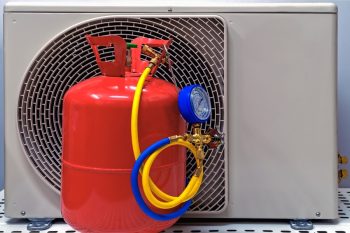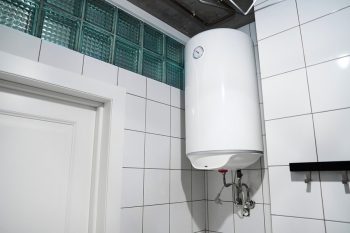
Removing a Zinsco circuit breaker can be a daunting task, especially if you have little experience with electrical repairs. However, with the right tools, safety precautions, and a detailed step-by-step guide, you can safely remove a Zinsco circuit breaker without the need of a professional electrician. In this article, we’ll cover everything you need to know about removing a Zinsco circuit breaker, including the reasons for removal, safety measures, common mistakes, disposal methods, and what to do if you encounter difficulties.
To remove a Zinsco circuit breaker, first, turn off the power on all circuits. Then, turn off the Zinsco breaker you want to remove and unscrew the conductors connected to it. Carefully pull the breaker out of the panel. Once the breaker is removed, inspect the bus bars for any damage. If the bus bars are damaged, do not install a new breaker at this location; instead, have the panel replaced by a professional electrician. Always ensure to follow safety measures and use appropriate tools during this process.
What is a Zinsco Circuit Breaker?
A Zinsco circuit breaker is a type of electrical panel and circuit breaker that was widely installed in homes across the country during the 1970s and 1980s. However, they are now considered dangerous and outdated due to their high failure rate and potential safety hazards. If you have a Zinsco panel in your home, it is recommended to replace it with a modern, safer electrical panel to protect your home from potential fire and electrical shock risks.
Signs That Indicate a Need to Remove a Zinsco Circuit Breaker
There are several signs that may indicate a need to remove a Zinsco Circuit Breaker, including:
- Breakers frequently tripping
- High utility bills
- Dimming lights
- Burning odor
- Corrosion or oxidation
- Humming or buzzing noises
- Breakers fused to the bus bar
If you notice any of these signs, it is recommended to consult with a licensed electrician to assess the situation and determine if the Zinsco breaker or panel needs to be replaced.
Tools and Materials Needed
Before you begin, make sure to gather the necessary tools and materials:
- Screwdriver
- Needle-nose pliers
- Channel-lock pliers
- Multimeter
- Personal Protective Equipment (PPE) such as gloves and safety goggles
- A rubber mat or piece of plywood to stand on for insulation against electric shock
- An independent source of light or an insulated flashlight
- Insulated wire strippers
- Insulated screwdriver
- Cable connectors for connecting wires
Safety Measures
When attempting to remove a Zinsco circuit breaker, it is crucial to follow safety measures to avoid electrical hazards. Always turn off the main breaker and test with a meter to confirm that the power is off. Be aware of live wires and use appropriate tools. Inspect the bus bars for any damage from arcing. If there is damage, do not install a new breaker at that location and consider having the panel replaced.
Step-By-Step Process
- Turn off the power on all circuits: Before starting, ensure that the main breaker is turned off. If there’s no main breaker, it’s highly recommended to let an electrician handle the task.
- Turn the breaker off and unscrew the conductors: Turn off the Zinsco breaker you want to remove. Then, unscrew the conductors connected to the breaker.
- Pull the breaker out: Carefully pull the breaker out of the panel. Zinsco breakers are notorious for arcing at the bus connections and “welding” themselves to the bus, so be cautious while removing the breaker.
- Inspect the bus bars: Once the breaker is removed, inspect the bus bars for any damage caused by arcing. If the bus bars are damaged, do not install a new breaker at this location; instead, have the panel replaced by a professional electrician.
Common Mistakes and How to Avoid Them
Common mistakes people make while removing a Zinsco Circuit Breaker include not turning off the main breaker, not inspecting the bus bars, using excessive force, and not replacing the entire panel. To avoid these mistakes, always turn off the main breaker and test for voltage, inspect the bus bars for damage, use gentle force when removing the breaker, and consider replacing the entire Zinsco panel with a safer, modern alternative.
Disposal of Zinsco Circuit Breakers
After you’ve successfully removed the Zinsco circuit breaker, you should properly dispose of it. This can be done by contacting a local recycling center, selling to a specialized company, contacting an electrical contractor, or disposing of it properly according to your local waste management guidelines.
What to Do If You Encounter Difficulties
If you encounter difficulties while attempting to remove a Zinsco Circuit Breaker, stop immediately to ensure your safety, assess the situation, seek professional help, and consider panel replacement if necessary.
In conclusion, removing a Zinsco circuit breaker can be a complex task, but with the right knowledge, tools, and safety precautions, you can safely and effectively do it yourself. However, if at any point you feel uncomfortable or unsure, it’s always best to consult with a licensed electrician.
Frequently Asked Questions
What are the dangers of a Zinsco Circuit Breaker?
Zinsco Circuit Breakers are considered dangerous due to their high failure rate. They are known to allow current to flow even when the breaker is switched off. This can lead to overheating, melting, or even fires.
Can I replace a Zinsco Circuit Breaker with any other type of circuit breaker?
No, you can’t. Zinsco panels are designed to accept only Zinsco breakers. If you want to use a different type of breaker, you would need to replace the entire panel.
How can I tell if I have a Zinsco Circuit Breaker in my home?
Zinsco panels are typically marked with the “Zinsco” name on the front cover. If the name isn’t visible, you can also identify them by their unique design – Zinsco breakers are typically colored and have a window where the trip mechanism is visible.
Can I sell my old Zinsco Circuit Breaker?
Yes, you can sell your old Zinsco Circuit Breaker to specialized companies that deal in used or outdated electrical equipment. However, it’s important to ensure that the breaker is properly deactivated and safe to handle before selling it.
What are the signs of a failing Zinsco circuit breaker?
Signs of a failing Zinsco circuit breaker include frequent tripping, high utility bills, dimming lights, burning odor, corrosion or oxidation, humming or buzzing noises, and breakers fused to the bus bar.











